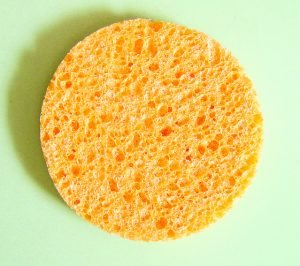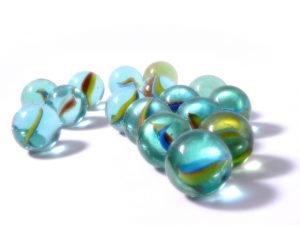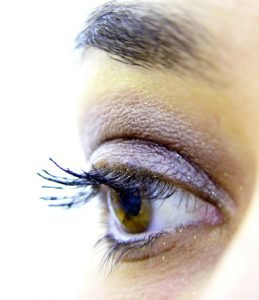Make having better skin your 2016 New Year’s resolution. Here are 13 tips that will help you take your skin care to the next level in 2016:
1. SUNSCREEN – THE PERFECT AMOUNT
 Proper sun protection is the single most important way to slow the effects of aging. Hopefully you are in the habit of packing sunscreen for a day at the beach or pool when you expect to get direct sun exposure for hours at a time. With that being said, it is just as important to use sunscreen on a daily basis everyday exposure counts; you do not have to be actively sunbathing to get a damaging dose of the sun. The sun is out 365 days a year and you need protection from it each day to reduce your lifetime sun-exposure total. If you are not already aware, there is no such thing as a “healthy tan”. A tan is the skin’s response to the sun’s damaging rays. Here’s a simple tip to determine the right amount of sunscreen to apply on your face: fill the hollow part of your palm the amount will be around ½ teaspoon, enough to properly coat your face, ears, and neck. Try SkinCeuticals or Skin Medica, these are favorites amongst dermatologists as your daily UVA/UVB sun protection. The Paragon Plastic Surgery & Med Spa offers both SkinCeuticals or Skin Medica skin care products!
Proper sun protection is the single most important way to slow the effects of aging. Hopefully you are in the habit of packing sunscreen for a day at the beach or pool when you expect to get direct sun exposure for hours at a time. With that being said, it is just as important to use sunscreen on a daily basis everyday exposure counts; you do not have to be actively sunbathing to get a damaging dose of the sun. The sun is out 365 days a year and you need protection from it each day to reduce your lifetime sun-exposure total. If you are not already aware, there is no such thing as a “healthy tan”. A tan is the skin’s response to the sun’s damaging rays. Here’s a simple tip to determine the right amount of sunscreen to apply on your face: fill the hollow part of your palm the amount will be around ½ teaspoon, enough to properly coat your face, ears, and neck. Try SkinCeuticals or Skin Medica, these are favorites amongst dermatologists as your daily UVA/UVB sun protection. The Paragon Plastic Surgery & Med Spa offers both SkinCeuticals or Skin Medica skin care products!
2. BREAKFAST = HEALTHY SKIN
 Foods rich in essential omega-3 fatty acids can help to stop blotchiness, inflammation, and the development of wrinkles. Try to eat almonds or walnuts every morning. A cup of green tea or two is always a great way to start your skin off right in the morning. Stress levels and a proper diet are closely related. Unfortunately, it’s when we have the most work that we forget to eat well and resort to using sugary, fatty snack foods as a pick-me-up. Try to avoid the vending machine and plan ahead. Fruits and vegetables are always good, and fish with high levels of omega-3 fatty acids have been shown to reduce the symptoms of stress. A tuna sandwich really is brain food.
Foods rich in essential omega-3 fatty acids can help to stop blotchiness, inflammation, and the development of wrinkles. Try to eat almonds or walnuts every morning. A cup of green tea or two is always a great way to start your skin off right in the morning. Stress levels and a proper diet are closely related. Unfortunately, it’s when we have the most work that we forget to eat well and resort to using sugary, fatty snack foods as a pick-me-up. Try to avoid the vending machine and plan ahead. Fruits and vegetables are always good, and fish with high levels of omega-3 fatty acids have been shown to reduce the symptoms of stress. A tuna sandwich really is brain food.
3. CUT YOUR STRESS
 High stress levels spike the production of hormones that spur acne and psoriasis breakouts. Taking a daily 10 minute “timeout” can do wonders for your skin. Even better: apply a facial mask, such as SkinCeutical’s Clarifying Clay Masque during your ‘me time’ to nourish your skin while you de-stress. If you’re feeling overwhelmed by a stressful situation try listening to relaxing music, calling a friend and talking about your problems or laughing (preferably not alone or you’ll seem a little crazy)! Laughter releases endorphins that ultimately improve mood and decrease levels of the stress-causing hormones cortisol and adrenaline. Lastly, try telling yourself why you’re stressed out, what you have to do to complete the task at hand, and most importantly, that everything will be OK (it will be).
High stress levels spike the production of hormones that spur acne and psoriasis breakouts. Taking a daily 10 minute “timeout” can do wonders for your skin. Even better: apply a facial mask, such as SkinCeutical’s Clarifying Clay Masque during your ‘me time’ to nourish your skin while you de-stress. If you’re feeling overwhelmed by a stressful situation try listening to relaxing music, calling a friend and talking about your problems or laughing (preferably not alone or you’ll seem a little crazy)! Laughter releases endorphins that ultimately improve mood and decrease levels of the stress-causing hormones cortisol and adrenaline. Lastly, try telling yourself why you’re stressed out, what you have to do to complete the task at hand, and most importantly, that everything will be OK (it will be).
4. AVOID IMPACT
 Did you know repeated high impact activities like running can weaken the skins collagen leading to sagging skin? Try alternating running for a session on the stationary bike or elliptical machine.
Did you know repeated high impact activities like running can weaken the skins collagen leading to sagging skin? Try alternating running for a session on the stationary bike or elliptical machine.
5. GRAB FROZEN PEAS
 Applying a bag of frozen peas to your eyes can sooth any form of irritation while helping to reduce swelling and dark circles. Peas work best as they conform to the natural shape of the eyes. For an extra boost to fight those unwanted dark circles and puffiness.
Applying a bag of frozen peas to your eyes can sooth any form of irritation while helping to reduce swelling and dark circles. Peas work best as they conform to the natural shape of the eyes. For an extra boost to fight those unwanted dark circles and puffiness.
6. YOGA FOR THE SKIN
 In addition to reducing stress, common yoga poses like Downward Facing Dog and Child’s Pose improve blood circulation. The extra boost in oxygen gives the skin a lovely glow while reducing inflammation.
In addition to reducing stress, common yoga poses like Downward Facing Dog and Child’s Pose improve blood circulation. The extra boost in oxygen gives the skin a lovely glow while reducing inflammation.
7. DON’T SKIP A DAY
 Have you ever turned in for bed only to realize you forgot to do your evening skin care routine? Try keeping your night skincare products near your bedside. You can easily do many treatments while in bed! It’ll give your skin a fighting chance!
Have you ever turned in for bed only to realize you forgot to do your evening skin care routine? Try keeping your night skincare products near your bedside. You can easily do many treatments while in bed! It’ll give your skin a fighting chance!
8. CUT SODIUM
 High sodium intake can lead to facial puffiness. One of the biggest unnoticed contributors of daily sodium is diet soft drinks, which usually contain between 25 to 50 milligrams of sodium per 12 ounce serving. Cut the soda and switch to water instead. Find water boring, add some flavor such as fresh lemon or cucumber slices. Both are rich in antioxidants and Vitamin C, but also act as diuretics to get those nasty toxins out of the body to help give you that nice glow to your skin.
High sodium intake can lead to facial puffiness. One of the biggest unnoticed contributors of daily sodium is diet soft drinks, which usually contain between 25 to 50 milligrams of sodium per 12 ounce serving. Cut the soda and switch to water instead. Find water boring, add some flavor such as fresh lemon or cucumber slices. Both are rich in antioxidants and Vitamin C, but also act as diuretics to get those nasty toxins out of the body to help give you that nice glow to your skin.
9. LIMIT THE SWEETS
 Let’s face it, we all love sugary sweets but the key here is balance and not having them in excess! The body’s natural process of breaking down sugar also damages the skin’s collagen. Limiting high-glycemic carbs can do wonders for your skin (and waistline). At blame is a natural process that’s known as glycation, in which the sugar in your bloodstream attaches to proteins to form harmful new molecules called advanced glycation end products (or, appropriately, AGEs for short).Most vulnerable to damage: collagen and elastin, the protein fibers that keep skin firm and elastic. In fact, collagen is the most prevalent protein in the body. Once damaged, springy and resilient collagen and elastin become dry and brittle, leading to wrinkles and sagging.Besides damaging collagen, a high-sugar diet also affects what type of collagen you have—another factor in how resistant skin is to wrinkling, says Brandt. The most abundant collagens in the skin are types I, II, and III, with type III being the most stable and longest lasting. Glycation transforms type III collagen into type I, which is more fragile. “When that happens, the skin looks and feels less supple,” says Brandt.
Let’s face it, we all love sugary sweets but the key here is balance and not having them in excess! The body’s natural process of breaking down sugar also damages the skin’s collagen. Limiting high-glycemic carbs can do wonders for your skin (and waistline). At blame is a natural process that’s known as glycation, in which the sugar in your bloodstream attaches to proteins to form harmful new molecules called advanced glycation end products (or, appropriately, AGEs for short).Most vulnerable to damage: collagen and elastin, the protein fibers that keep skin firm and elastic. In fact, collagen is the most prevalent protein in the body. Once damaged, springy and resilient collagen and elastin become dry and brittle, leading to wrinkles and sagging.Besides damaging collagen, a high-sugar diet also affects what type of collagen you have—another factor in how resistant skin is to wrinkling, says Brandt. The most abundant collagens in the skin are types I, II, and III, with type III being the most stable and longest lasting. Glycation transforms type III collagen into type I, which is more fragile. “When that happens, the skin looks and feels less supple,” says Brandt.
10. RELAXING WORKOUTS
Facial strains during exercise, specifically tensing of the neck and jaw, can pull the skin, leading to sagging. Next time you hit the gym work on keeping your face and neck calm during your workout.
11. STAY AWAY FROM YOUR HEATER
 Being in close proximity to a space heater or fireplace can induce redness, breakdown collagen and further increase dryness during the Fall/Winter months. When you need heat this winter try to stay 5-10 feet away from the source. We have the perfect moisturizers at our office that will keep your skin silky smooth during those cold months.
Being in close proximity to a space heater or fireplace can induce redness, breakdown collagen and further increase dryness during the Fall/Winter months. When you need heat this winter try to stay 5-10 feet away from the source. We have the perfect moisturizers at our office that will keep your skin silky smooth during those cold months.
12. USE A CUP
 Regularly sucking from a straw or drinking from a water bottle creates lines and wrinkles around the mouth. Especially in your 30’s as our collagen starts to break down and can’t erase those lines as easily. Instead drink from a glass or use a cup with a spout that will allow you to squirt water into your mouth. Always remember to put your skincare products on your upper lip to help fight those fine lines and wrinkles.That’s why she recommends giving your skin a steady flow of water: Every day, aim for eight to 10 eight-ounce servings, and spread them out throughout the day as opposed to guzzling them all at once.That may be because water plumps up the skin, causing wrinkles and pores to, more or less, get filled in. What’s more, a variety of structures in the skin that support collagen require water to work effectively your skin is 64 percent water,
Regularly sucking from a straw or drinking from a water bottle creates lines and wrinkles around the mouth. Especially in your 30’s as our collagen starts to break down and can’t erase those lines as easily. Instead drink from a glass or use a cup with a spout that will allow you to squirt water into your mouth. Always remember to put your skincare products on your upper lip to help fight those fine lines and wrinkles.That’s why she recommends giving your skin a steady flow of water: Every day, aim for eight to 10 eight-ounce servings, and spread them out throughout the day as opposed to guzzling them all at once.That may be because water plumps up the skin, causing wrinkles and pores to, more or less, get filled in. What’s more, a variety of structures in the skin that support collagen require water to work effectively your skin is 64 percent water,
13. BEAUTY SLEEP
 We all know getting a full night sleep helps the entire body. But did you know that your pillow could be aging your skin? If you sleep with face against a pillow wrinkles in the fabric can lead to sleep lines. Try sleeping on your back or use a smooth silk pillowcase (like the Save My Face pillow). Getting those wrinkles on your décolletage, but always tend to end up sleeping on your side? Try the bosom buddy pillow as part of your “don’t’ skip a day” nightly skin routine. Everyone knows stress can cause you to lose sleep. Unfortunately, lack of sleep is also a key cause of stress. This vicious cycle causes the brain and body to get out of whack and only gets worse with time. Make it a point to get the doctor-recommended seven to eight hours of sleep. Turn the TV off earlier, manage your time, and do your best to get into bed.
We all know getting a full night sleep helps the entire body. But did you know that your pillow could be aging your skin? If you sleep with face against a pillow wrinkles in the fabric can lead to sleep lines. Try sleeping on your back or use a smooth silk pillowcase (like the Save My Face pillow). Getting those wrinkles on your décolletage, but always tend to end up sleeping on your side? Try the bosom buddy pillow as part of your “don’t’ skip a day” nightly skin routine. Everyone knows stress can cause you to lose sleep. Unfortunately, lack of sleep is also a key cause of stress. This vicious cycle causes the brain and body to get out of whack and only gets worse with time. Make it a point to get the doctor-recommended seven to eight hours of sleep. Turn the TV off earlier, manage your time, and do your best to get into bed.
[calltoaction]To learn more about Skin Care Products and Skin Care Treatments, please contact us at (817) 473-2120 today or email appointments@markbisharamd.com[/calltoaction]





 Proper sun protection is the single most important way to slow the effects of aging. Hopefully you are in the habit of packing sunscreen for a day at the beach or pool when you expect to get direct sun exposure for hours at a time. With that being said, it is just as important to use sunscreen on a daily basis everyday exposure counts; you do not have to be actively sunbathing to get a damaging dose of the sun. The sun is out 365 days a year and you need protection from it each day to reduce your lifetime sun-exposure total. If you are not already aware, there is no such thing as a “healthy tan”. A tan is the skin’s response to the sun’s damaging rays. Here’s a simple tip to determine the right amount of sunscreen to apply on your face: fill the hollow part of your palm the amount will be around ½ teaspoon, enough to properly coat your face, ears, and neck. Try
Proper sun protection is the single most important way to slow the effects of aging. Hopefully you are in the habit of packing sunscreen for a day at the beach or pool when you expect to get direct sun exposure for hours at a time. With that being said, it is just as important to use sunscreen on a daily basis everyday exposure counts; you do not have to be actively sunbathing to get a damaging dose of the sun. The sun is out 365 days a year and you need protection from it each day to reduce your lifetime sun-exposure total. If you are not already aware, there is no such thing as a “healthy tan”. A tan is the skin’s response to the sun’s damaging rays. Here’s a simple tip to determine the right amount of sunscreen to apply on your face: fill the hollow part of your palm the amount will be around ½ teaspoon, enough to properly coat your face, ears, and neck. Try  Foods rich in essential omega-3 fatty acids can help to stop blotchiness, inflammation, and the development of wrinkles. Try to eat almonds or walnuts every morning. A cup of green tea or two is always a great way to start your skin off right in the morning. Stress levels and a proper diet are closely related. Unfortunately, it’s when we have the most work that we forget to eat well and resort to using sugary, fatty snack foods as a pick-me-up. Try to avoid the vending machine and plan ahead. Fruits and vegetables are always good, and fish with high levels of omega-3 fatty acids have been shown to reduce the symptoms of stress. A tuna sandwich really is brain food.
Foods rich in essential omega-3 fatty acids can help to stop blotchiness, inflammation, and the development of wrinkles. Try to eat almonds or walnuts every morning. A cup of green tea or two is always a great way to start your skin off right in the morning. Stress levels and a proper diet are closely related. Unfortunately, it’s when we have the most work that we forget to eat well and resort to using sugary, fatty snack foods as a pick-me-up. Try to avoid the vending machine and plan ahead. Fruits and vegetables are always good, and fish with high levels of omega-3 fatty acids have been shown to reduce the symptoms of stress. A tuna sandwich really is brain food. High stress levels spike the production of hormones that spur acne and psoriasis breakouts. Taking a daily 10 minute “timeout” can do wonders for your skin. Even better: apply a facial mask, such as
High stress levels spike the production of hormones that spur acne and psoriasis breakouts. Taking a daily 10 minute “timeout” can do wonders for your skin. Even better: apply a facial mask, such as  Did you know repeated high impact activities like running can weaken the skins collagen leading to sagging skin? Try alternating running for a session on the stationary bike or elliptical machine.
Did you know repeated high impact activities like running can weaken the skins collagen leading to sagging skin? Try alternating running for a session on the stationary bike or elliptical machine. Applying a bag of frozen peas to your eyes can sooth any form of irritation while helping to reduce swelling and dark circles. Peas work best as they conform to the natural shape of the eyes. For an extra boost to fight those unwanted dark circles and puffiness.
Applying a bag of frozen peas to your eyes can sooth any form of irritation while helping to reduce swelling and dark circles. Peas work best as they conform to the natural shape of the eyes. For an extra boost to fight those unwanted dark circles and puffiness. In addition to reducing stress, common yoga poses like Downward Facing Dog and Child’s Pose improve blood circulation. The extra boost in oxygen gives the skin a lovely glow while reducing inflammation.
In addition to reducing stress, common yoga poses like Downward Facing Dog and Child’s Pose improve blood circulation. The extra boost in oxygen gives the skin a lovely glow while reducing inflammation. Have you ever turned in for bed only to realize you forgot to do your evening skin care routine? Try keeping your night skincare products near your bedside. You can easily do many treatments while in bed! It’ll give your skin a fighting chance!
Have you ever turned in for bed only to realize you forgot to do your evening skin care routine? Try keeping your night skincare products near your bedside. You can easily do many treatments while in bed! It’ll give your skin a fighting chance! High sodium intake can lead to facial puffiness. One of the biggest unnoticed contributors of daily sodium is diet soft drinks, which usually contain between 25 to 50 milligrams of sodium per 12 ounce serving. Cut the soda and switch to water instead. Find water boring, add some flavor such as fresh lemon or cucumber slices. Both are rich in antioxidants and Vitamin C, but also act as diuretics to get those nasty toxins out of the body to help give you that nice glow to your skin.
High sodium intake can lead to facial puffiness. One of the biggest unnoticed contributors of daily sodium is diet soft drinks, which usually contain between 25 to 50 milligrams of sodium per 12 ounce serving. Cut the soda and switch to water instead. Find water boring, add some flavor such as fresh lemon or cucumber slices. Both are rich in antioxidants and Vitamin C, but also act as diuretics to get those nasty toxins out of the body to help give you that nice glow to your skin. Let’s face it, we all love sugary sweets but the key here is balance and not having them in excess! The body’s natural process of breaking down sugar also damages the skin’s collagen. Limiting high-glycemic carbs can do wonders for your skin (and waistline). At blame is a natural process that’s known as glycation, in which the sugar in your bloodstream attaches to proteins to form harmful new molecules called advanced glycation end products (or, appropriately, AGEs for short).Most vulnerable to damage: collagen and elastin, the protein fibers that keep skin firm and elastic. In fact, collagen is the most prevalent protein in the body. Once damaged, springy and resilient collagen and elastin become dry and brittle, leading to
Let’s face it, we all love sugary sweets but the key here is balance and not having them in excess! The body’s natural process of breaking down sugar also damages the skin’s collagen. Limiting high-glycemic carbs can do wonders for your skin (and waistline). At blame is a natural process that’s known as glycation, in which the sugar in your bloodstream attaches to proteins to form harmful new molecules called advanced glycation end products (or, appropriately, AGEs for short).Most vulnerable to damage: collagen and elastin, the protein fibers that keep skin firm and elastic. In fact, collagen is the most prevalent protein in the body. Once damaged, springy and resilient collagen and elastin become dry and brittle, leading to  Being in close proximity to a space heater or fireplace can induce redness, breakdown collagen and further increase dryness during the Fall/Winter months. When you need heat this winter try to stay 5-10 feet away from the source. We have the perfect moisturizers at our office that will keep your skin silky smooth during those cold months.
Being in close proximity to a space heater or fireplace can induce redness, breakdown collagen and further increase dryness during the Fall/Winter months. When you need heat this winter try to stay 5-10 feet away from the source. We have the perfect moisturizers at our office that will keep your skin silky smooth during those cold months. Regularly sucking from a straw or drinking from a water bottle creates lines and wrinkles around the mouth. Especially in your 30’s as our collagen starts to break down and can’t erase those lines as easily. Instead drink from a glass or use a cup with a spout that will allow you to squirt water into your mouth. Always remember to put your skincare products on your upper lip to help fight those fine lines and wrinkles.That’s why she recommends giving your skin a steady flow of water: Every day, aim for eight to 10 eight-ounce servings, and spread them out throughout the day as opposed to guzzling them all at once.That may be because water plumps up the skin, causing wrinkles and pores to, more or less, get filled in. What’s more, a variety of structures in the skin that support collagen require water to work effectively your skin is 64 percent water,
Regularly sucking from a straw or drinking from a water bottle creates lines and wrinkles around the mouth. Especially in your 30’s as our collagen starts to break down and can’t erase those lines as easily. Instead drink from a glass or use a cup with a spout that will allow you to squirt water into your mouth. Always remember to put your skincare products on your upper lip to help fight those fine lines and wrinkles.That’s why she recommends giving your skin a steady flow of water: Every day, aim for eight to 10 eight-ounce servings, and spread them out throughout the day as opposed to guzzling them all at once.That may be because water plumps up the skin, causing wrinkles and pores to, more or less, get filled in. What’s more, a variety of structures in the skin that support collagen require water to work effectively your skin is 64 percent water, We all know getting a full night sleep helps the entire body. But did you know that your pillow could be aging your skin? If you sleep with face against a pillow wrinkles in the fabric can lead to sleep lines. Try sleeping on your back or use a smooth silk pillowcase (like the
We all know getting a full night sleep helps the entire body. But did you know that your pillow could be aging your skin? If you sleep with face against a pillow wrinkles in the fabric can lead to sleep lines. Try sleeping on your back or use a smooth silk pillowcase (like the 


